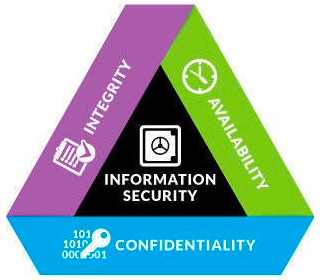
The business value of data has never been greater. 75% of customers report they would not buy from a company they do not trust to protect their data. Last year, however, became record-breaking in terms of data breaches, showing a 68% jump from the previous year.
Given a vastly expanded attack surface due to an abrupt shift to working from home and the lack of proper security protections, IT environments are a low-hanging fruit for cyber criminals. The most common reasons include compromised credentials (19%), cloud misconfigurations (19%), and vulnerability in third-party software (16%).
 Source: Cost of Data Breach Report, IBM Security
Source: Cost of Data Breach Report, IBM Security
The last thing that businesses want is to become yet another cyber security statistics. However, many SMEs believe that cyber criminals go only after big names and large corporations, so they tend to neglect the implementation of robust security controls. But facts paint a different picture — according to researchers at Barracuda Networks, a cloud security company, employees at small organizations experience 350% more social engineering attacks than employees at larger companies.
Confidentiality, integrity, and availability are three fundamental principles that guide the development and implementation of data security policies. Also known as the CIA triad, this framework helps organizations to protect against threats like data leaks, breaches, malware attacks, phishing, and others.

The CIA triad forms the basis for developing appropriate security policies and procedures to safeguard company’s data. Let’s dive deeper to see what security controls and solutions organizations can implement to ensure confidentiality, integrity, and availability of business data.
Compromised credentials and mismanaged access controls present significant security threats and expose confidential business data that can be stolen or abused both by internal and external actors. To ensure information confidentiality, it is crucial to control who has access to it. To that end, organizations must implement robust identity and access management (IAM) policies that can include the following:
Encrypting sensitive data is another method aimed to ensure confidentiality. According to a report by the Ponemon Institute for IBM, encryption has the greatest impact, reducing data breach costs by an average of $360,000.
Best security practices include encrypting data both when it moves (in transit) and when it resides in a storage system (at rest). Essentially, there are two methods of encryption — symmetric encryption where data is encrypted and decrypted using a single private key and asymmetric encryption, where a combination of public and private keys is used. Today, the Advanced Encryption Standard (AES) is considered to be the gold standard for data encryption. Businesses should also consider implementing full-disk encryption with tools like BitLocker to secure their remote system fleets.
As we have discussed earlier, data integrity is one of the cornerstones of information security. In addition to encryption, a smart data backup plan also helps to ensure data integrity and protect against permanent data loss, ransomware or malware.
In practice, a robust data backup strategy includes the following steps:
With the remote and hybrid workplace model thriving, workers continue to use their personal laptops and mobile phones. CIRA Cyber Security report says that 50% of hybrid workforce claim they occasionally use personal devices for work purposes. If this access to corporate resources is left unmanaged and unsupervised, it can put business data at risk of theft of corruption.
The practice of using personal devices for work-related activities is called BYOD (Bring Your Own Device). In order to successfully and securely embrace BYOD, companies need to follow best strategies that include strong passwords, secure network connectivity, segregation of personal and corporate data, and more. Personal devices can also be lost or stolen, and your IT department should have an action plan in place like device locking and remote wiping to ensure sensitive business data will not fall into the wrong hands.
According to the Global Risks Report prepared by the World Economic Forum, 95% of cybersecurity threats are traced back to human error. And while human error can have a broad definition, these numbers indicate that employees are often the weakest link in the security toolchain and can easily become the target for bad actors.
Social engineering techniques used by these attackers are becoming increasingly complex and sophisticated. From phishing scams to malware to baiting and watering, cyber criminals often use emotional manipulation and trickery to gain access to a network or data.

Source: Compass Security
The best defense against these attacks is to promote the culture of awareness and invest in employee training. When employees are aware of the dangers of social engineering, they are less likely to fall victim to them. Given that these attacks are evolving, employee security trainings must be conducted on a regular basis to make sure their knowledge is fresh and up-to-date.
When it comes to cybersecurity, a proactive approach is always better than reactive, and a part of it is a regular risk assessment. The primary purpose of a cyber risk assessment is to evaluate an entire IT infrastructure in order to detect potential weaknesses and vulnerabilities. A risk assessment also aims to discover the most valuable data for business and what happens in case of a data breach.
Risk security assessments help business leaders see blind spots, apply fixes, and patch security vulnerabilities. The findings also support a better decision-making process and help develop an effective risk mitigation plan to protect business data.
Ensuring data security is a complex and challenging endeavor. From implementing robust identity and access controls to end-to-end data encryption to a resilient data backup strategy, data security involves many information technologies and best practices. Companies that don’t have a security professional on their team, should consider engaging security experts to stay on top of any threats and improve security posture.



